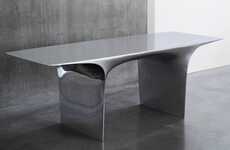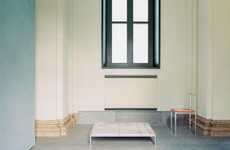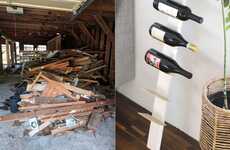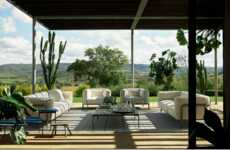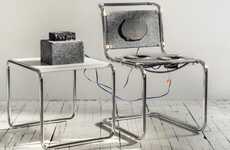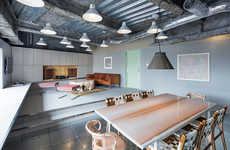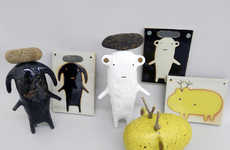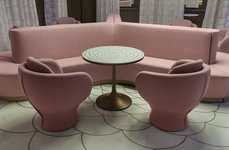
Bentu Design Makes Terrazzo-Style Furniture from Recycled Ceramic Waste
Ellen Smith — June 5, 2017 — Eco
References: bentudesign & dezeen
Bentu Design has released a terrazzo-style furniture collection made entirely of recycled materials. The furniture and lighting collection made from ceramic waste was created with the intention of drawing a bridge between environmental consciousness and design.
To make the house ware collection, Bentu Design used 4 million tonnes of ceramic waste from China's Foshan city. The area is the ceramic production capital of the world, generating immense amounts of leftover materiel that typically gets dumped in neighboring villages. "Not only is the cost of disposal high, but the non-degradable materials can also not be digested by nature, hence occupy the land, affect the growth of vegetation and even pollute the water," said Bentu Design.
The furniture and lighting collection come in both light and dark speckled patterns and ensures that environmentally sustainability is not only attainable, but fashionable and aesthetically pleasing as well.
To make the house ware collection, Bentu Design used 4 million tonnes of ceramic waste from China's Foshan city. The area is the ceramic production capital of the world, generating immense amounts of leftover materiel that typically gets dumped in neighboring villages. "Not only is the cost of disposal high, but the non-degradable materials can also not be digested by nature, hence occupy the land, affect the growth of vegetation and even pollute the water," said Bentu Design.
The furniture and lighting collection come in both light and dark speckled patterns and ensures that environmentally sustainability is not only attainable, but fashionable and aesthetically pleasing as well.
Trend Themes
1. Recycled Materials - Disruptive innovation opportunity: Develop new products and designs using recycled materials to promote sustainability and environmental consciousness.
2. Terrazzo-style Furniture - Disruptive innovation opportunity: Explore the use of terrazzo-style furniture made from unconventional materials to create unique and visually appealing designs.
3. Environmental Consciousness - Disruptive innovation opportunity: Integrate environmental consciousness into design practices and create products that prioritize sustainability.
Industry Implications
1. Furniture Manufacturing - Disruptive innovation opportunity: Adopt the use of recycled materials in furniture manufacturing to tap into the growing demand for sustainable and eco-friendly products.
2. Ceramic Production - Disruptive innovation opportunity: Develop innovative ways to upcycle ceramic waste and reduce the environmental impact of ceramic production.
3. Lighting Design - Disruptive innovation opportunity: Incorporate recycled materials and eco-friendly practices into lighting design to create sustainable and visually appealing lighting solutions.
4.7
Score
Popularity
Activity
Freshness

